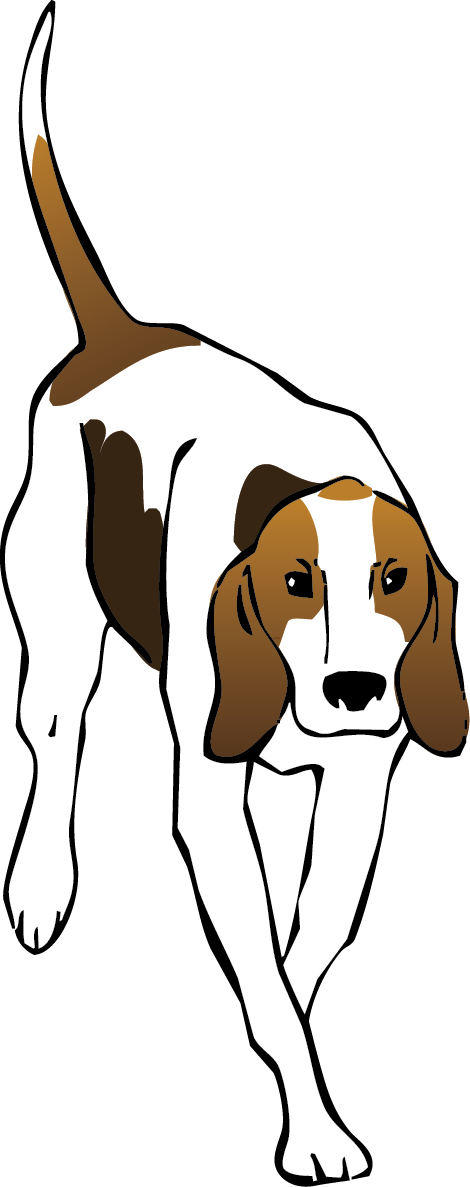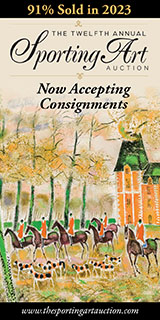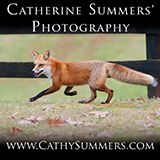Wildlife
The Eastern Coyote
Illustration by Doug Pifer
Early in the twentieth century, at the behest of western ranching and agricultural interests that were losing stock to predators, the U.S. Government instituted program after program designed to erase the wolf, grizzly bear, mountain lion, and coyote from the landscape. The programs were mostly successful in their purpose: the wolf, grizzly, and mountain lion were driven nearly to extinction. The coyote, however, was the one predator that not only survived the pressure, but increased its population and its range. How it did that is one of the mysteries of the animal world.
The Pennsylvania Game Commission has published an excellent study of the eastern coyote (Wildlife Note 39), which we believe readers—even those familiar with the species—will find substantive and revealing. We republish it here with the kind permission of the Pennsylvania Game Commission.
The eastern coyote has stirred as much interest and emotion as any other animal in Pennsylvania. Seeing a coyote or hearing the howl of this wild, wily animal is a great reward of nature to many people. Others fear this animal just knowing it is in the wild. Some sportsmen dislike coyotes because they think the predators kill too many game animals. Trappers and hunters find coyotes to be especially challenging. Some farmers lose livestock due to coyote predation. The coyote has been referred to as the brush wolf, prairie wolf, coy-dog (misnomer) and eastern coyote.
The eastern coyote, Canis latrans, is found throughout the northeastern United States and southeastern Canada. Recent research shows the eastern coyote is an immigrant, the origin of which likely involved interbreeding between coyotes and gray wolves. Analysis of DNA suggests coyote-wolf hybridization has occurred. Other studies indicate that the eastern coyote is intermediate in size and shape between gray wolves and western coyotes. As a result, the eastern coyote exhibits different behavior, habitat use, pelt coloration, prey preferences and home-range sizes from its western cousin. The eastern coyote is the largest canine found in Pennsylvania. The following information pertains to the coyote in Pennsylvania and throughout northeastern United States.
Rare Red Fox Sighted at Yosemite
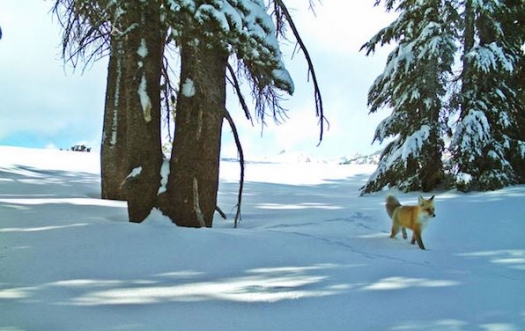
It’s been one hundred years since a sighting of the Sierra Nevada red fox has been confirmed in Yosemite National Park. Also known as the High Sierra fox, it is a subspecies (vulpes vulpes necator) of the red fox (vulpes vulpes) and was captured on camera in Yosemite in mid-December, 2014. The California Fish and Game Commission declared this exceedingly rare subspecies threatened in 1980, and it could receive federal protection under the Endangered Species Act this year.
The Sierra Nevada red fox is slightly smaller and darker than the more common red fox, which is non-native to California. It’s range is limited to alpine and subalpine meadows above 4,500 feet.
The Coyote: Thriving Through Persecution
Dr. Stanley Gehrt and an anesthesized coyote in metropolitan ChicagoThe Belle Meade Hounds in Thomson, Georgia will once again stage their annual Hunt Week—Gone Away with the Wind—this season from January 18 to 24. As before, the week will be fun-filled with hunting, parties, a hunt ball, and the camaraderie of the field.
As a bonus, this year’s affair will feature a fascinating presentation by special guest Dr. Stanley Ghert, Associate Professor of Wildlife Ecology and a Wildlife Extension Specialist at Ohio State University.
Dr. Ghert, who has enthralled foxhunters at MFHA meetings over the years, will talk to Belle Meade Hunt Week attendees on Thursday morning, January 22, about his special subject of research—the coyote. This much-aligned animal has survived and even flourished over the past hundred years despite the best efforts of the federal government to eradicate it.
Early in the twentieth century, at the behest of western ranching and agricultural interests that were losing stock to predators, the U.S. Government instituted program after program designed to erase the wolf, grizzly bear, mountain lion, and coyote from the landscape. The programs were mostly successful in their purpose. The wolf, grizzly, and mountain lion were driven nearly to extinction. The coyote, however, was the one predator that not only survived the pressure, but increased its population and its range, slowly expanding eastward and covering now the entire country. How it did that is one of the mysteries of the animal world.
How Long Can a Red Fox Live?
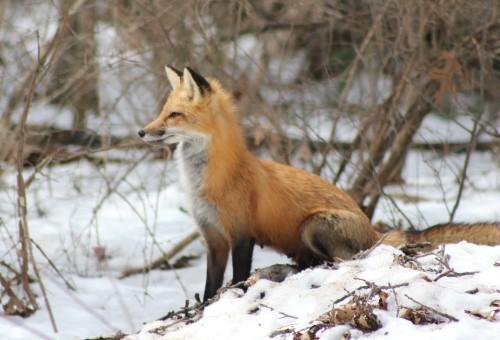 Mary Marks photo
Mary Marks photo
I believe that the ripest old age a tame fox might achieve is twelve. A wild, country fox could reach about eight. The governing factor, of course, apart from predators, is the fox’s teeth. No teeth, no food, no energy, and the end will be near, perhaps by scavenging dog or internal parasite—a death neither quick nor noble, and without Nature’s own equivalent of the National Health Service.
When I was hunting the Tiverton in Devon, the oldest fox caught by my hounds was aged six, according to that great naturalist Sir Newton Rycroft. It was the Tiverton’s first hunt in the New Forest, in 1975, and the fox’s incisors were long, very curved, and extremely dark—which prompted the discussion. The longer and more curved the teeth, the older the fox. Bob Street, who had disappeared into a bog during the excitement of the run, said that in forty years’ hunting it was one of the oldest he had seen hounds catch.
Naturalist’s Notebook: The Red Fox
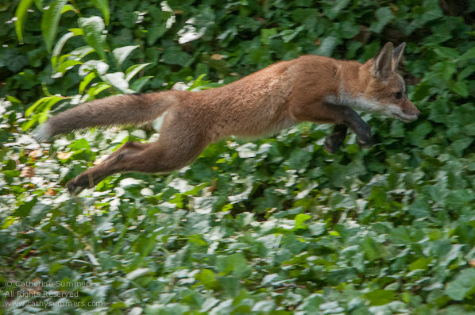 Cathy Summers photo
Cathy Summers photo
As a followup to our recent piece on the coyote, here’s that same naturalist’s description of the red fox. As before, I’m unable to provide a reference, book title, author, publisher, or date for this excellent bit of wood lore. If any reader recognizes it and can identify the source, we will publish that information in a future issue.
The red fox (Vulpes fulva) is one of the best-known characters in history and legend, widely spread over the temperate and northern regions of the world. For its combination of beauty and grace and intelligence it has had the attention of artists, poets, and naturalists, and merits the attention of those who would read the signs of the out-of-doors.
Naturalist’s Notebook: The Coyote
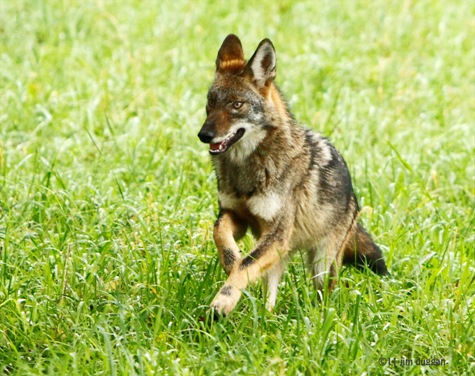 Jim Duggan photoAs a followup to Mark Twain’s rollicking description of the coyote and Susan Walker’s report on the Longreen Foxhound’s recent coyote chase, here’s further information about that secretive animal that provides so many North American hunts with their sport. I’m unable to provide a source reference for this excellent bit of wood lore, but if any reader recognizes it and can identify the source, we will publish that information in a future issue.
Jim Duggan photoAs a followup to Mark Twain’s rollicking description of the coyote and Susan Walker’s report on the Longreen Foxhound’s recent coyote chase, here’s further information about that secretive animal that provides so many North American hunts with their sport. I’m unable to provide a source reference for this excellent bit of wood lore, but if any reader recognizes it and can identify the source, we will publish that information in a future issue.
The coyote, Canis latrans, with its many varieties, known also as brush wolf and prairie wolf, is widespread and well known.
I sometimes think that the most conspicuous coyote sign is his night song. Certainly a camp on the plains in the Southwest or in the western mountains is cozier when enhanced by the serenade of coyote in the moonlight. He who would follow the mammals in the wilds should know something of the significance of this. Unaccustomed ears, trained by traditional journalism, might interpret the coyote voice as something doleful, a sad requiem that makes one crowd closer to the campfire. Or a flippant tongue might speak of the "yapping" of the coyotes.
But if the coyote could reflect and speak he would say this is his song, simply that. However it may appear to human ears, to the coyote it satisfies the universal impulse for expression of emotion, simple as that may sometimes be among furred animals.
The Coyote: An Allegory of “Want”
 Jim Duggan photo
Jim Duggan photo
Here is the funniest, most perceptive and penetrating description of the coyote that I have ever read! Excerpted from Roughing It, a collection of Mark Twain's experiences while prospecting and reporting in the Wild West between 1861 and 1867.
Another night of alternate tranquility and turmoil. But morning came, by and by. It was another glad awakening to fresh breezes, vast expanses of level greensward, bright sunlight, and impressive solitude utterly without human beings or human habitations, and an atmosphere of such amazing properties that trees that seemed close at hand were more than three miles away.
We resumed undress uniform, climbed atop of the flying coach, dangled our legs over the side, shouted occasionally at our frantic mules, merely to see them lay their ears back and scamper faster, tied our hats on to keep our hair from blowing away, and leveled an outlook over the world-wide carpet about us for things new and strange to gaze at. Even at this day it thrills me through and through to think of the life, the gladness, and the wild sense of freedom that used to make the blood dance in my veins on those fine overland mornings!
Along about an hour after breakfast we saw the first prairie-dog villages, the first antelope, and the first wolf. If I remember rightly, this latter was the regular coyote (pronounced ky-o-te) of the farther deserts. And if it was, he was not a pretty creature or respectable either, for I got well acquainted with his race afterward, and can speak with confidence.
The Coyote, An “Allegory of Want”
Here is the funniest, most perceptive, and penetrating description of the coyote that I have ever read! Excerpted from "Roughing It," a collection of Mark Twain's experiences while traveling through the Wild West by mule wagon between 1861 and 1867. From the Foxhunting Life archives.
 Jim Duggan photo
Jim Duggan photo
Another night of alternate tranquility and turmoil. But morning came, by and by. It was another glad awakening to fresh breezes, vast expanses of level greensward, bright sunlight, and impressive solitude utterly without human beings or human habitations, and an atmosphere of such amazing properties that trees that seemed close at hand were more than three miles away.
We resumed undress uniform, climbed atop of the flying coach, dangled our legs over the side, shouted occasionally at our frantic mules, merely to see them lay their ears back and scamper faster, tied our hats on to keep our hair from blowing away, and leveled an outlook over the world-wide carpet about us for things new and strange to gaze at. Even at this day it thrills me through and through to think of the life, the gladness, and the wild sense of freedom that used to make the blood dance in my veins on those fine overland mornings!
Along about an hour after breakfast we saw the first prairie-dog villages, the first antelope, and the first wolf. If I remember rightly, this latter was the regular coyote (pronounced ky-o-te) of the farther deserts. And if it was, he was not a pretty creature or respectable either, for I got well acquainted with his race afterward, and can speak with confidence.
